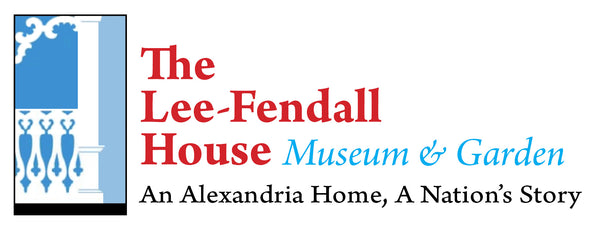When the Virginia Trust for Historic Preservation’s new Executive Director, Shawn Eyer, began work this past May, he found a pleasant surprise: his new office was already adorned with several bookcases overflowing with an impressive collection of books about Alexandria and local history, architecture, material culture, and museology. As an avid bibliophile, he was delighted—the more so when he discovered that all of the bookshelves had been beautifully hand-crafted by Carter Refo, a longtime member of the museum’s board of directors.
Soon, he learned that this collection of books was the VTHP’s Research Library, carefully assembled over the past five decades. A page on the Lee-Fendall website noted that researchers could view the library by appointment or request staff to conduct research on their behalf. But since there was no detailed information about the library holdings, such requests were almost unheard-of.
“One of the first questions I asked myself,” Eyer said, “was how we could bring this very valuable and specialized research library out of obscurity and make it of genuine use to researchers and the community.”
The most obvious problem to resolve was that researchers could only know what was in the library by physically visiting the museum. And, since the library was in the executive office area, it was not as accessible as it ought to have been even for Lee-Fendall’s own staff, research volunteers, and docents. Finally, a new and comprehensive historic structures report recommended a significant decrease in the mass stored in the office area due to a sagging floor. So for reasons both of access and of structural benefit, it was not ideal for the books to remain where they were.
To improve the situation, it was decided to both relocate the library and create an open-access digital catalogue of its holdings. There are several steps involved in making this transition:
- Cataloging the Collections. Working as other duties allowed, Lee-Fendall House staff and volunteers carefully catalogued in our OPAC every book, pamphlet, and video source in the library, guided by Library of Congress standards. Books were measured and weighed, covers photographed, author names standardized, and metadata scrutinized.
- Integrating Digital Resources. Many books printed before 1923 are available online in downloadable formats such as PDF. The Lee-Fendall online catalogue includes such links wherever a digital copy of a certain resource is also available online.
- Care & Repair. Many of the books had loose pages, damaged spines, and torn dustjackets. A modest investment in library supplies would be needed to properly care for these volumes.
- Sorting, Re-labeling and Re-shelving. The library will ultimately be migrated to a more easily accessible area in the House, with new standardized labels on the items.
As the work began place, we found many surprises along the way. Many books are inscribed with special dedications to the Lee-Fendall House Museum. Other are signed by the author or part of limited editions. All of these details are carefully documented in the online catalogue. “Because this is a non-circulating research library available only by appointment, we want to make it as accessible as possible," said Jenny Waters, Lee-Fendall’s Collections and Programming Manager.
Now that the library is reorganized, it is time to revitalize it. Each year, new books will be added to the collection as resources allow. You can support the work we are doing in the library and other parts of the House by becoming a Member or by making a gift. All gifts to the Lee-Fendall House are tax deductible to the extent allowed by law.

